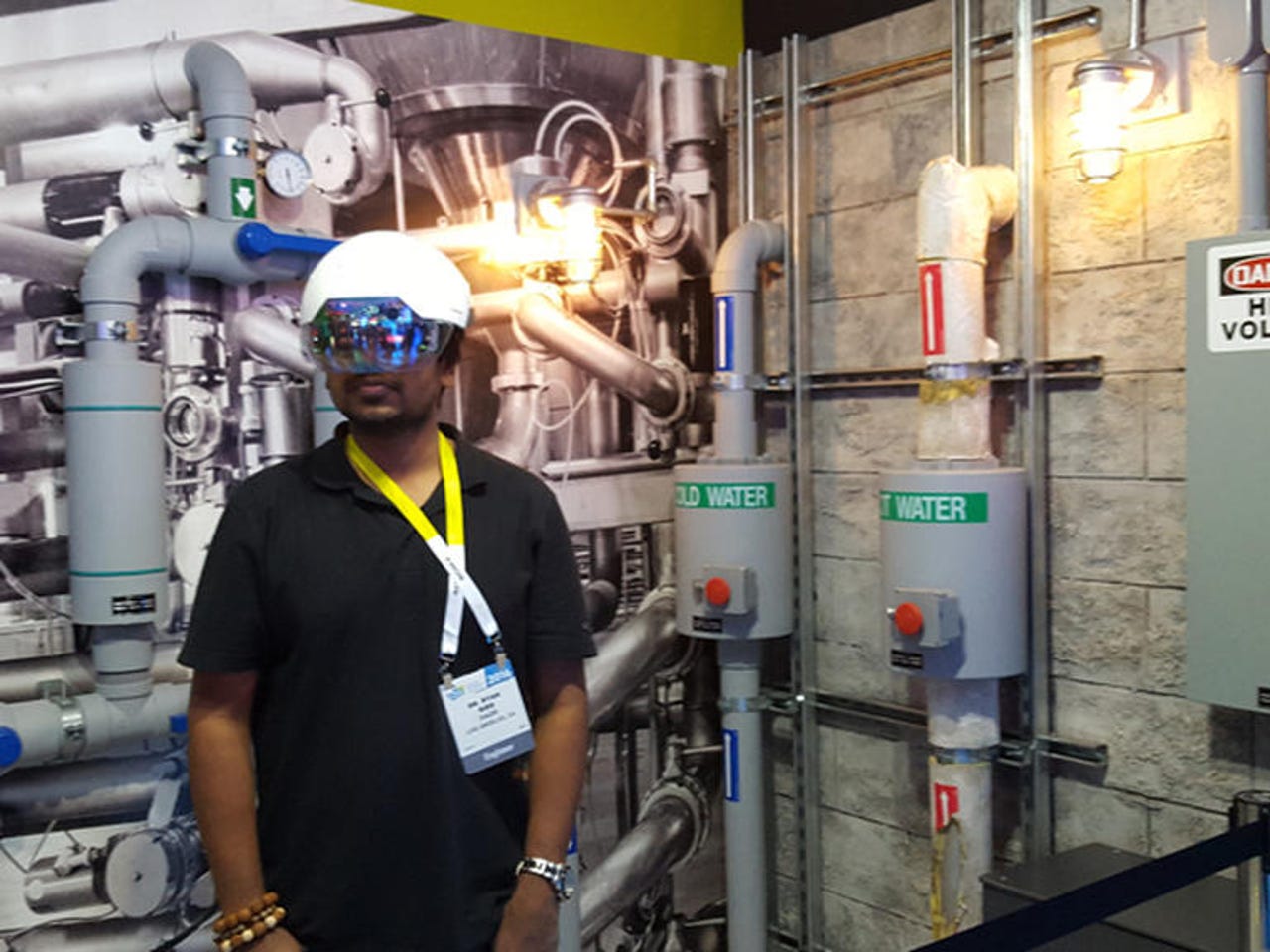Ten industries using augmented reality and virtual reality


If you're a gamer, odds are you know that augmented and virtual reality are poised to change the entertainment industry. However, entertainment isn't the only space where AR and VR are making inroads. In fact, there are few industries left that don't haven't at least dabbled with the potential of the blurring of the physical and digital worlds.
Here are 10 industries, with examples, doing just that.
1. Education
There are numerous ways that all levels of education can use -- and already are using -- both virtual and augmented reality. At Google I/O in 2015, Google announced Expeditions, a virtual reality platform built for classrooms. Students can use Cardboard to take guided tours of famous cities like Barcelona, Spain, or inaccessible places like space.
As far as higher education, Western University in Pomona, California recently opened a virtual reality learning center for medical students. It has various tools, including a digital dissection table. Tools like zSpace let students wear 3D glasses and manipulate parts of the human body using a stylus.
The idea is to create stronger educational experiences. Instead of reading about red blood cells, students can use a Oculus DK2 to travel inside the human body as one, and that's typically much more memorable than reading about it in a textbook.
2. Healthcare
Virtual reality's already been in use in healthcare for years. One VR experience called Snow World helps burn victims deal with the excruciating process of rehabilitation and wound care by distracting them with an immersive, snowy environment featuring snowball-throwing penguins.
VR is also used for exposure therapy at institutions like the University of Louisville. For patients dealing with phobias of crowds, heights, or even public speaking, virtual reality can be a safe way to practice being in those environments. They can get out of the situation easily, repeat it as needed, and not have to worry about the unpredictability of the real world just yet.
In another case, VR can help with phantom limb pain, or pain that amputees experience that seemingly originates in a limb they no longer have. For example, the person might feel they're tightly and painfully clenching a fist that's not there. In the past, mirrors have been used as treatment, the idea being the brain can sync with the image of the limb. The medical journal Frontiers in Neuroscience included a study about using VR in a similar manner. Patients play a game that involves completing tasks with the VR limb. They move it using sensors that pick up nerve inputs from their brains.
And just recently, a doctor in Miami used Google Cardboard to plan for a surgery on a baby who was born with half a heart and only one lung. Cardboard helped him see the 3D images of the baby's heart in a way he otherwise couldn't, and it helped him figure out how to save her life.
On the AR front, there are also a myriad applications. AccuVein is a handheld scanner that projects an image over skin of the veins, valves, and bifurcations underneath in order to make it easier for doctors and nurses to find a vein for an injection -- saving time and discomfort for the patient. There's also Viipar, which is a video support platform that lets a surgeon in one location, project his or her hands onto the display of another surgeon's Google Glass during a surgery in order to point or guide.
3. Air and space
Back in the 60s, Tom Furness, who is considered to be the grandfather of virtual reality, was at Wright Patterson Air Force base working on VR solutions to solve various problems pilots were having in the cockpit. The military still uses AR and VR technology in similar ways.
On the space side, NASA has been using VR at the Johnson Space Center in Houston, Texas to train astronauts for spacewalks since 1992.
SEE: NASA shows the world its 20-year virtual reality experiment (TechRepublic)
4. Marketing
Marketing is a strong arena for virtual and augmented reality. Major motion pictures like Star Wars, Jurassic World, Insurgent, The Avengers: Age of Ultron, and more others have released VR experiences to generate interest, excitement, and a strong memory associated with the brand.
And in a more traditional sense, organizations like The New York Times or Savannah College of Art and Design have used branded Google Cardboard units to either create brand awareness or straight up sell ads.
5. Journalism
Late 2015 saw The New York Times, Outside Magazine, and others embraced 360-degree video to tell journalistic stories. Before that, journalist Nonny de la Peña founded Emblematic, a startup focused on VR journalism.
Journalists often struggle with how best to bring readers to places they might not otherwise be able go, or how to make them understand events. For example, media organization RYOT, which has been producing 360 videos, told TechRepublic that standing in the middle of the destruction of a city like Aleppo, Syria, can help illustrate why there's been a refugee crisis.
SEE: Immersive journalism: What virtual reality means for the future of storytelling (TechRepublic)
6. Travel
Getting to visit a location in virtual reality could help potential travelers make decisions like where they want to visit, or even which hotel they want to book.
Beyond that, companies like Marriott are figuring out how to use VR. Last year, the hotel chain created a VR experience that let users 'teleport' to either a Hawaiian beach or the top of a skyscraper in London, as well as the rooms of Marriotts in those locations.
More recently, Marriott has been testing out VRoom Service. Guests staying at specific locations could have a GearVR delivered to their rooms to view VR postcards from places like Chile, Rwanda, and Beijing.
Also consider Google's augmented reality app Wordlens. It lets users aims their smartphones at signs and automatically translate them, directly on the sign, which could be very useful for international business travelers.
7. Real estate
House hunters are already used to looking at pictures of properties on sites like Zillow. Of course, nothing replaces the real thing, but visuals do play a role in deciding whether to even bother visiting a location.
Virtual reality could give people the ability to stand inside a house or apartment without leaving their home or office. YouVisit offers the ability to view 360 videos pictures of some listings. In June, computer vision technology company Matterport raised $30 million for its platform, which is geared toward the creation of augmented and virtual reality. One of their chief targets is real estate agents.
With Matterport's camera and cloud software used to stitch videos, agents can show off homes in 3D. Similarly, Australian start up Start VR developed an app to help sell apartments in a new development.
SEE: Virtual reality in 2016: The 10 biggest trends to watch (TechRepublic)
8. Skilled trades
Smart glasses are seeing adoption on factory floors and in fields like construction and oil and gas, where hands need to be free, but tech tools can increase efficiency. Imagine needing to make a repair on a piece of equipment, and having a guide on how to do that, right in your field of view.
DAQRI's smart helmet made a splash at CES this year. The AR wearable lets users do things like see through faulty pipes or overlay directions onto the helmet's display.
AR and VR is even helping train folks for these types of jobs. There are VR welding simulators, for example, that allow for hands-on experience, without the cost of learning on actual materials.
9. Automotive
Ford Motor Company uses virtual reality to design cars before it makes a physical prototype. In Ford's Immersion Lab, designers can use an Oculus Rift to walk around the car and even sit inside of it to get an early idea of what the customer experience would be.
Lexus even created a driving simulator in 2014. As of October 2015, the auto industry held its first conference focusing specifically on the use of augmented reality in automaking, which covered how AR can be used across the board from production to sales.
10. Retail
In retail, augmented and virtual reality can be used in ways that help businesses move customers through the purchase funnel. For example, augmented reality app ModiFace offers what it calls a Mirror -- essentially the user can look into a tablet and use the app to change eye color, makeup and the like. The crazy thing is it looks pretty real. Think about it like this: It's a lot easier to spend money on an expensive lipstick when you know it's going to look good on you. They also have other apps that let you try hair color, nail colors, or wedding dresses.
On the virtual reality side, Marxent Labs partnered with Lowe's Home Improvement to create an app that lets users design a kitchen or bathroom, and in certain stores, they can use an Oculus Rift DK2 to see a VR rendering of the design. They can even view the design at home using 360 video and Google Cardboard. Again, visualisation is an area of strength for VR. Helping customers match flooring, fixtures, cabinetry, and lighting could help them come to a decision faster, and then buy all those materials at Lowe's, for example.
Also see
- Eyeballing Oculus Rift and HoloLens, now Google creates its own virtual reality arm
- Apple has assembled large team for VR, has headsets prototyped: Report
- Virtual reality and augmented reality in the workplace: A primer for CIOs (TechRepublic)
- Oculus Rift VR: We must control virtual reality before it controls us
- Virtual reality vs. augmented reality: Debating the merits (TechRepublic)
- Research: Virtual and augmented reality in the enterprise (Tech Pro Research)